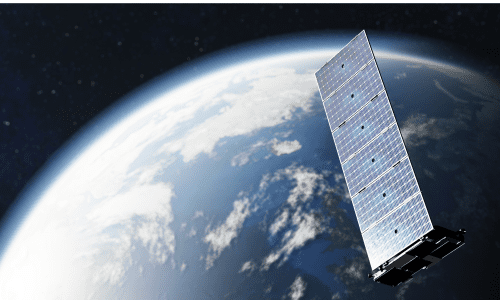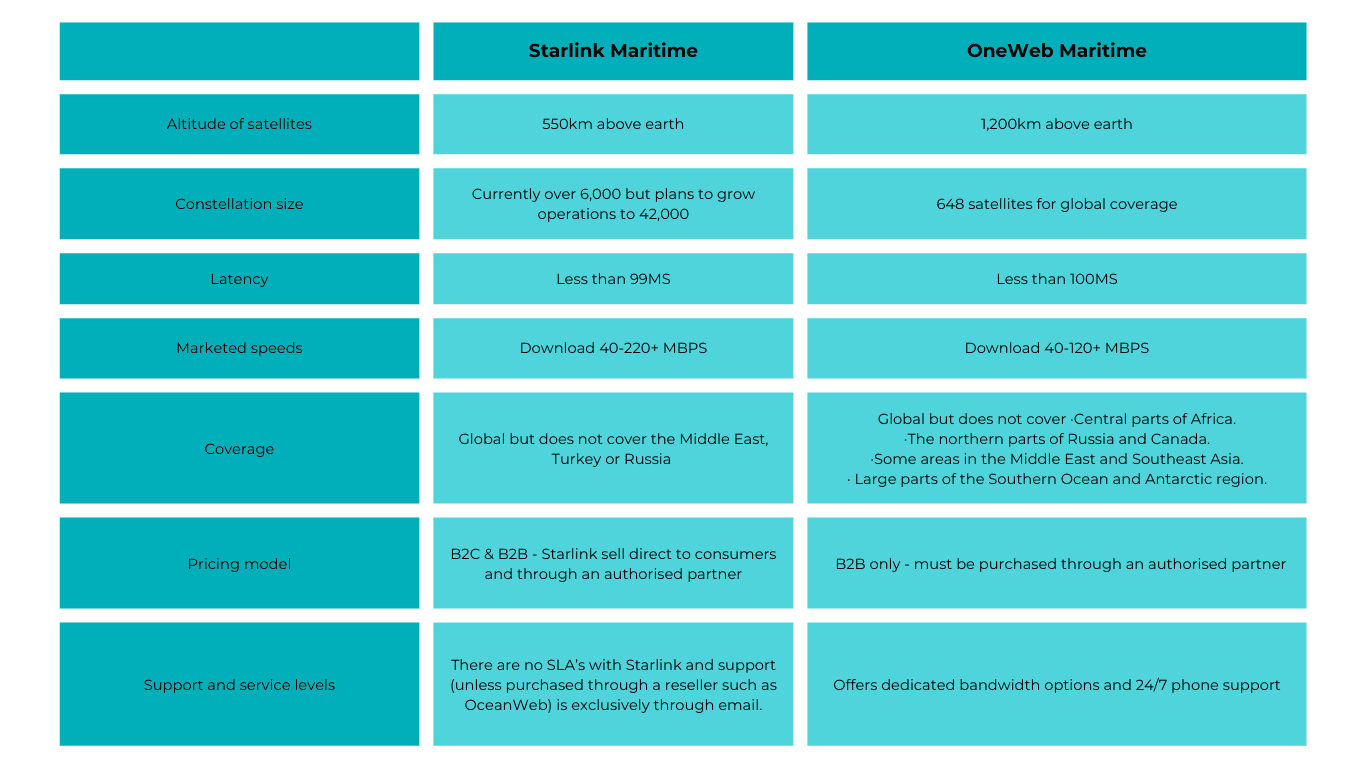The LEO Effect: Starlink vs OneWeb
Since 2022 Starlink has been the buzz word throughout the superyacht technology industry, advertising unprecedented speeds at a price point vastly lower than its VSAT counterpart. Its adoption has been rapid with captains and crew eager to test the LEO connectivity service and benefit from its ability to further minimise the gap between land and sea. Whilst a number of competing services are in the works such as Amazon Kuiper, Starlink was first to market and since its deployment has been unchallenged by its rivals, until now. OneWeb Maritime, has been in the works since 2012 and has recently been the second major LEO service to enter the market.
LEO Connectivity – What it is and why it’s the future
Starlink and OneWeb are both composed of a LEO (Low Earth Orbit) satellite constellation. Unlike the previous primary offshore connectivity solution, VSAT (Very Small Aperture Terminal), which uses GEO (geostationary) satellites. The key difference between the two is where they are positioned above the earth. GEO satellites sit at 35,000km above earth, whereas LEO satellites are positioned much closer to the earth, at 2,000km or less. What does this mean? In basic terms, due to its closer proximity to the earth, services using LEO constellations are able to deliver much lower latency, higher speeds and increased bandwidth.
The benefits of LEO Solutions such as Starlink and OneWeb
Improved Connectivity
LEO constellations provide near-global coverage, including the polar regions which GEO constellations are unable to service. The higher speeds and lower latency means that real-time applications such as online gaming and video conferencing are more accessible.
Improved Operations
These new mega LEO constellations enable real-time data transfer, improving onboard safety. It also paves the way for technology that was previously unfeasible for yachts due to connectivity requirements. For example, remote yacht management systems and controlling onboard equipment.
Improved Guest Experience
Yachts utilising LEO services are able to provide guests with a superior experience. For example, use of streaming services, without buffering and excessive data charges. Guests can also stay connected, whether this be on social media, or remote working, with LEO providing the necessary bandwidth for efficient remote work.
Improved cost efficiency
It’s not often that you can get an improved service for a lower cost, however the current LEO solutions in-market offer just that. The pricing model is much more affordable, with monthly fees.


What is OneWeb?
OneWeb, originally founded as “WorldVu” in 2012, has overcome significant challenges including multiple ownership changes, bankruptcy, and geopolitical disruptions. Today, as part of French owned satellite company Eutelsat, OneWeb is focused on bridging the digital divide in rural and remote areas.
OneWeb’s LEO constellation is the second largest in the world, comprising 648 satellites in polar orbits that cover the Earth’s surface from 1,200km above, this is 30 times closer than traditional geo-stationary satellites. By orbiting much closer to Earth, OneWeb delivers reliable connectivity to places previously unreachable. Watch OneWeb’s video to learn exactly how the technology works.
What are the differences between OneWeb and Starlink?
Whilst both are utilising similar technology, there are some key differences between the services, both in terms of performance and commercial models. The table below compares Starlink Maritime to OneWeb Maritime.

Note: Table data as of July 2024
Which service is right for me?
It goes without saying that both services are great options and provide a giant leap forward for connectivity at sea. If high-speed, low latency connectivity is what you’re seeking, both will do the job. A key differentiator is their priority markets, with OneWeb focused on servicing businesses and Starlink prioritising direct consumers, and this is evident in their business models and levels of service. With Starlink providing no SLAs regarding bandwidth, vessels must have a backup connectivity solution.
Due to Starlinks focus on appealing to mass consumers, large-scale events, where many terminals are all in one area, has seen service disruptions. OneWeb’s infrastructure has been designed to circumvent congestion and minimise packet loss, in theory contributing to a highly reliable connection. If you want to ensure your connectivity is uninterrupted and set sail knowing you have 24/7 real-time support, OneWeb might be an option to consider.
To learn more about both services and discuss which option might be best for your requirement please contact our sales team at sales@oceanweb.com.
Recent Comments